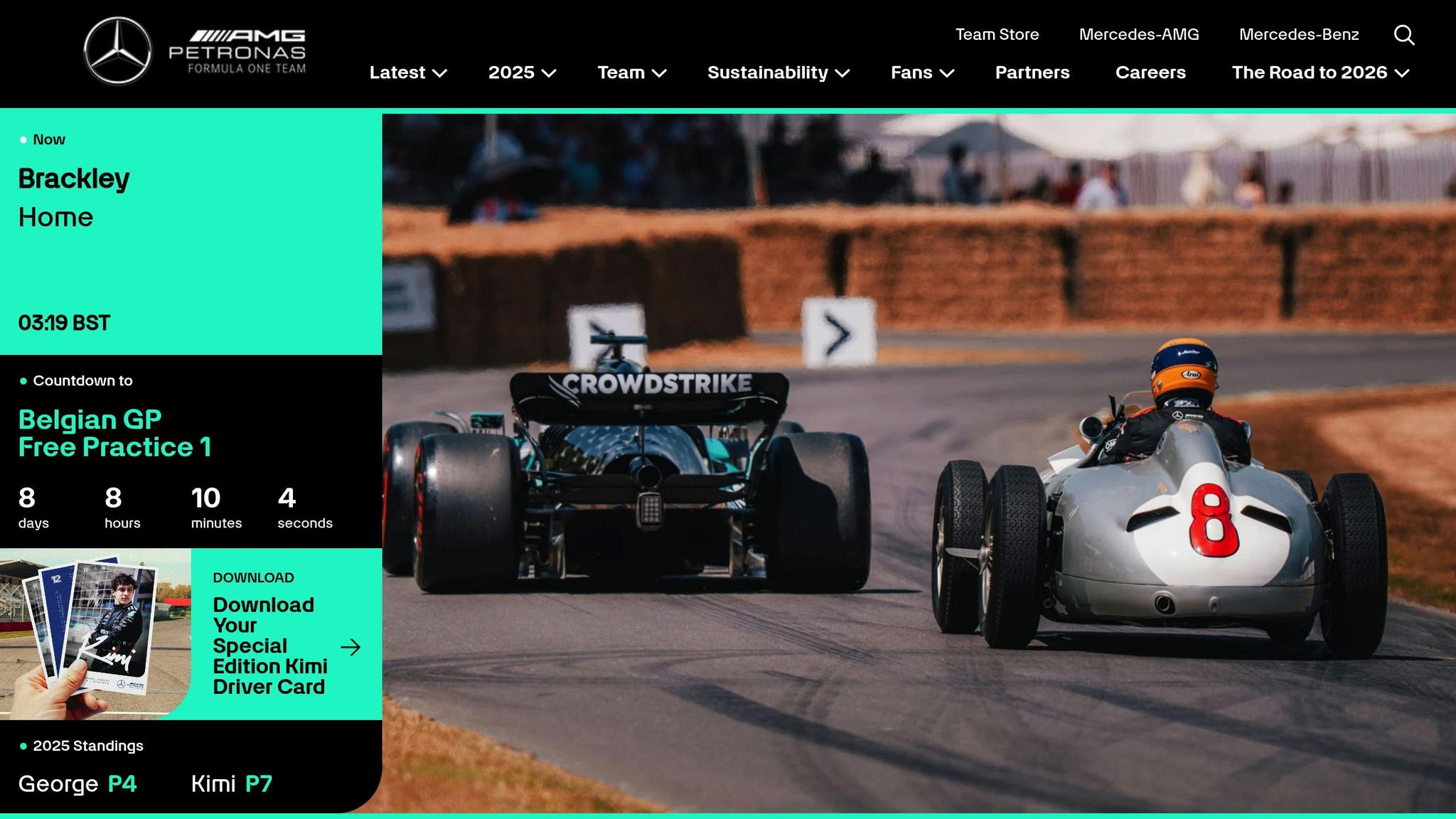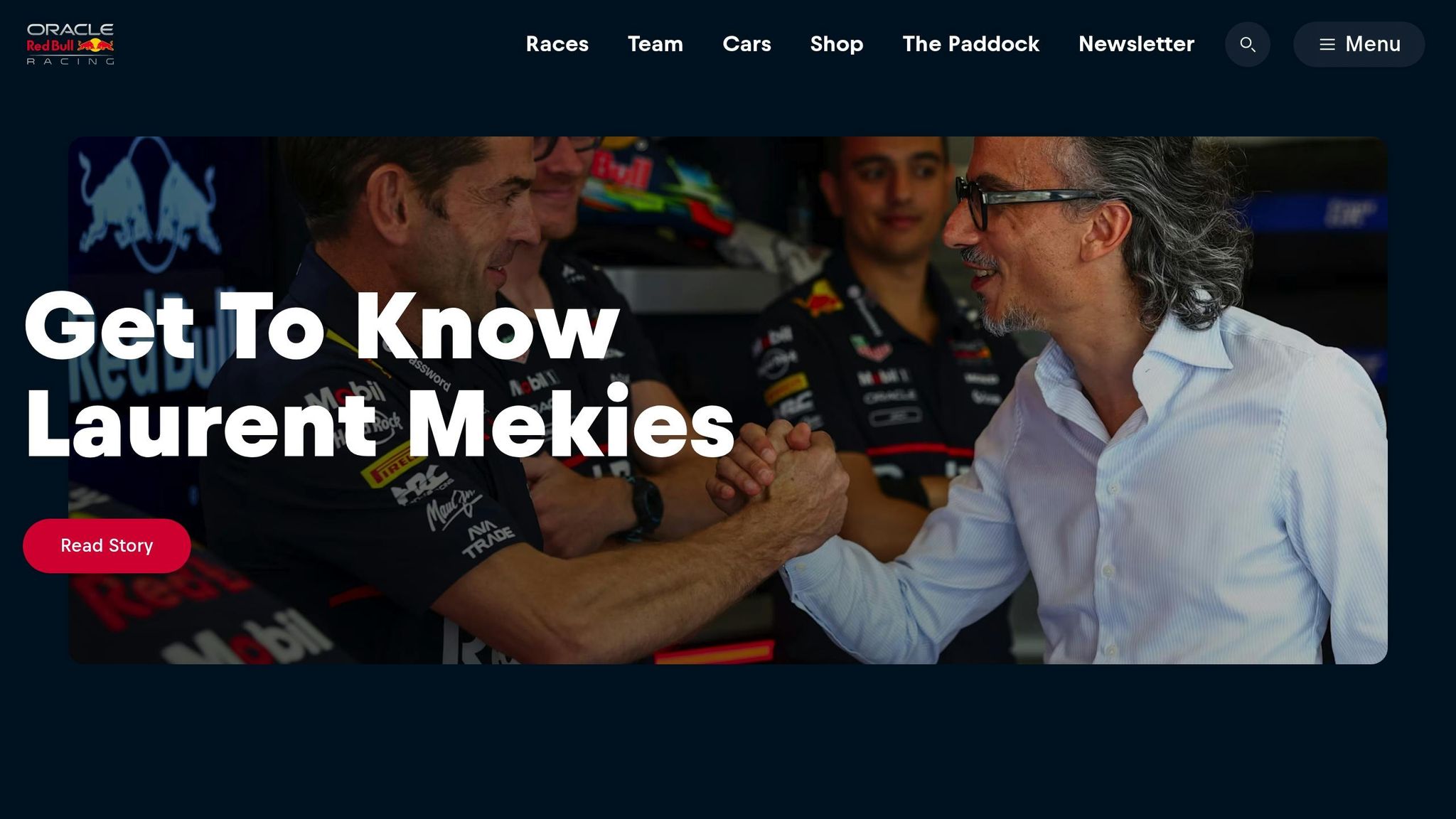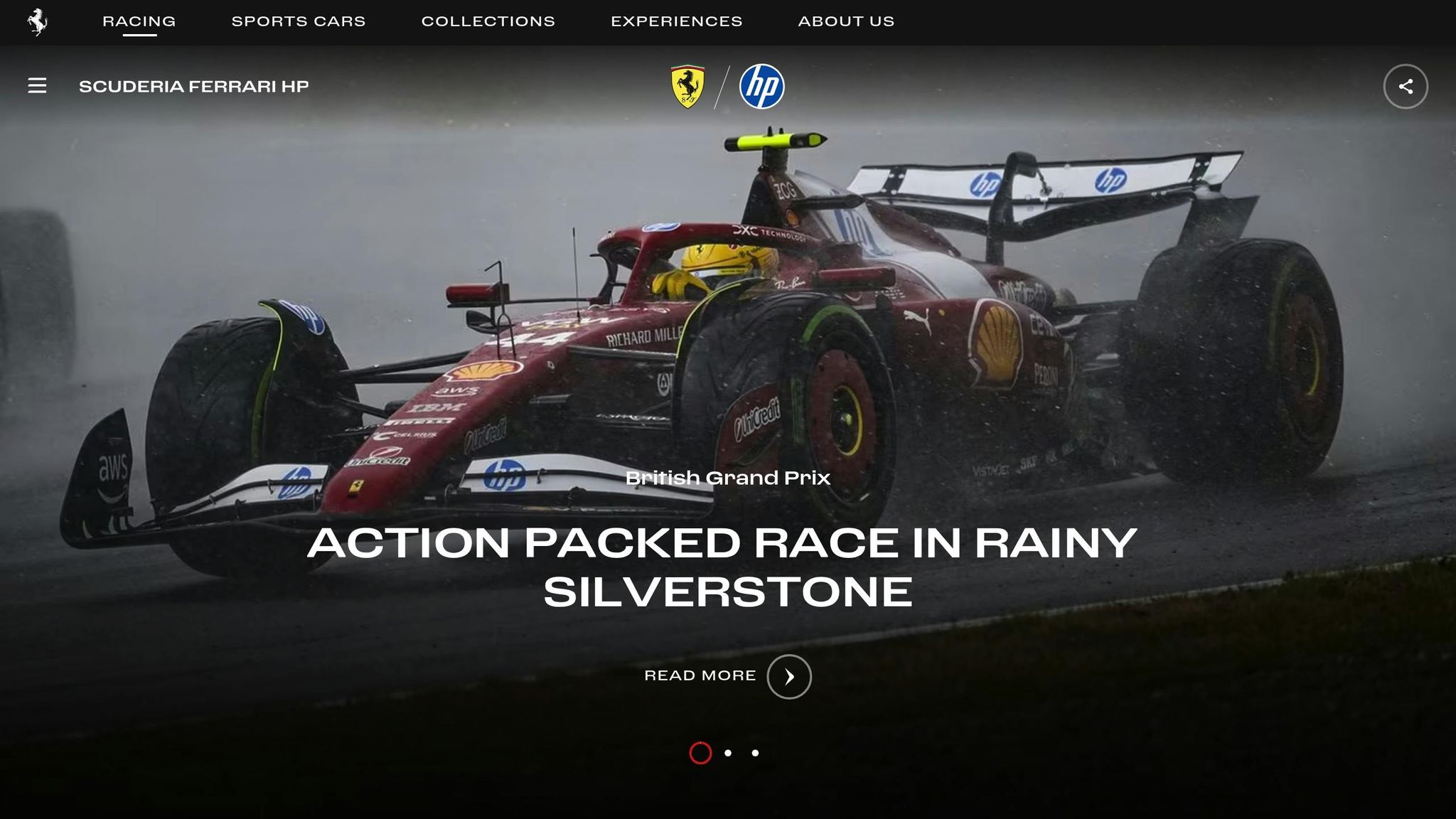Shanghai Showdown: What to Expect from the 2025 Chinese Grand Prix
The 2025 Chinese Grand Prix at Shanghai features a resurfaced track, fierce driver rivalries, and strategic tire management challenges.

The 2025 Chinese Grand Prix promises high drama as the second race of the Formula 1 season. Held at the Shanghai International Circuit, this event introduces several twists, including a resurfaced track and the first sprint weekend of the year. Here's what you need to know:
- Current Standings: Lando Norris (McLaren) leads with 44 points, followed by Max Verstappen (Red Bull) at 36.
- Key Challenges: The resurfaced circuit adds unpredictability with higher tire degradation and grip variability.
- Track Features: The 1.2-km back straight and the tight first corner will test drivers’ skills.
- Team Insights:
- Driver Battles: Norris vs. Piastri (McLaren) and Verstappen vs. Leclerc (Red Bull vs. Ferrari) headline intense rivalries.
With limited practice time due to the sprint format, teams must rely on quick adjustments and sharp strategy to succeed. Expect a thrilling race shaped by tire management, overtaking opportunities, and the ever-present risk of Safety Cars.
The Drivers Look Ahead To Race Weekend | 2025 Chinese Grand Prix
Team Performance Analysis at Shanghai
The Shanghai International Circuit isn't just a test of car performance - it’s a stage where strategy plays a starring role. Its 5.451km layout blends technical twists with high-speed straights, demanding a perfect balance between car setup and race strategy.
McLaren arrives as the team to beat, fresh off a dominant 1–2 finish at the 2025 Chinese Grand Prix. Oscar Piastri clinched pole with an impressive 1:30.641 lap time. Their strength lies in the MCL39's ability to master Shanghai's tricky corners, particularly the tightening sequence of Turns 1 and 2, where their precision shines.
Red Bull, on the other hand, faces a mixed bag of opportunities and hurdles. Known for their straight-line speed, the RB21 thrives on the 1.2km back straight between Turns 13 and 14, a prime overtaking zone. However, tire degradation remains a thorn in their side. Max Verstappen’s struggles with medium tires, describing them as "dead" by Lap 14, highlight the challenge. Their success will hinge on managing tire wear through high g-force corners like Turns 7 and 8.
Ferrari has a history of excelling in Shanghai's sweeping corners, particularly in Sector 2. This section, with its flowing bends through Turns 7, 8, and 9, suits their car's cornering strength. However, optimizing their setup for the resurfaced track will be a key focus.
Meanwhile, Mercedes boasts an impressive track record here, with six constructor wins and Lewis Hamilton’s unmatched six victories at the circuit. Hamilton’s dominance from 2008 to 2019 reflects the team’s adaptability. The W16’s superior tire management could be a game-changer, especially as Pirelli predicts a two-stop strategy due to increased tire degradation on the newly resurfaced track.
| Team | Shanghai Wins | Key Strength | Primary Challenge |
|---|---|---|---|
| McLaren | 4 | Cornering precision | - |
| Red Bull | 1 | Straight-line speed | Tire degradation |
| Ferrari | 4 | Sector 2 performance | Setup optimization for resurfaced track |
| Mercedes | 6 | Tire management | Adapting to new track surface |
The resurfaced track adds another layer of complexity. Increased stress on front tires, combined with uncertain grip levels, could disrupt traditional team strengths. Pirelli’s Mario Isola highlights the importance of strategy in this context:
"As for strategy, the level of degradation leads us to suggest that a two-stop is obligatory, featuring the Medium and the Hard".
This scenario favors teams with strong tire management skills.
Adding to the challenge is the sprint weekend format. With limited practice sessions, teams must lean heavily on driver feedback and past data to fine-tune their setups. Managing tire allocation across just 12 sets for the weekend further raises the stakes.
Driver Battles and Head-to-Head Comparisons
The Shanghai International Circuit is set to be the backdrop for some gripping driver matchups, each with the potential to shape the race weekend. These rivalries, intertwined with team strategies, promise to deliver plenty of drama and intrigue.
McLaren's Internal Championship Battle

In McLaren's garage, Oscar Piastri is challenging Lando Norris's well-established position. Piastri has been making waves in qualifying, signaling his growing confidence and putting additional pressure on the team dynamics. Norris, currently sitting 2nd in the standings with 4 wins, 10 podiums, and 3 poles, showcased his race-winning prowess at the British Grand Prix. Meanwhile, Piastri's second-place finish - despite a penalty - has added a layer of complexity to McLaren's approach. When race circumstances demand tough decisions, team orders could become a source of contention.
McLaren Team Principal Andrea Stella acknowledged Piastri's progress, saying:
"I think the most important improvement, if anything, is that Oscar has become a faster driver."
This rivalry highlights the contrast between Piastri's consistency and Norris's raw speed, setting up a fascinating psychological duel that could influence McLaren's strategy moving forward.
Mercedes: Experience vs. Raw Talent

While McLaren grapples with internal dynamics, Mercedes faces its own unique pairing: George Russell and Kimi Antonelli. This combination of experience and emerging talent brings its own challenges and opportunities. Russell has already secured strong early-season podiums, showcasing his expertise in car placement. Team Principal Toto Wolff praised Russell's performance:
"George's driving was 10 out of 10... he extracted the maximum out there in the race."
Antonelli, still finding his footing, has consistently scored points in the first three races and the opening Sprint. Acknowledging the gap in experience, Antonelli noted:
"The main difference is you can see the confidence he has; especially he knows how to place the car, and also where the car is going to end up in a corner while pushing."
With familiarity on the Shanghai circuit, Antonelli may close the gap to Russell, particularly if he sharpens his qualifying performance.
The Verstappen-Leclerc Rivalry Continues
Few rivalries in Formula 1 are as captivating as the one between Max Verstappen and Charles Leclerc. Verstappen's impressive record - 62 poles and four championships - gives him a psychological advantage, but Leclerc's calculated risk-taking keeps him in the fight. Their recent clash at the Spanish Grand Prix on June 1, 2025, was a perfect example of their competitive edge: Verstappen's oversteer on lap 61 opened the door for Leclerc to attempt an overtake, resulting in a minor collision deemed a racing incident by the stewards. Verstappen ultimately finished 10th after a penalty, while Leclerc secured 3rd.
On a high-speed circuit like Shanghai, Verstappen's skill in qualifying could give him an edge, but Leclerc's strategic aggression might make things unpredictable.
| Driver Pairing | Key Dynamic | Shanghai Advantage |
|---|---|---|
| Norris vs. Piastri | Internal championship pressure | Piastri's qualifying strengths vs. Norris's race pace |
| Russell vs. Antonelli | Experience vs. raw talent | Russell's car placement skills in technical sections |
| Verstappen vs. Leclerc | Established rivalry | Verstappen's qualifying prowess vs. Leclerc's calculated risk-taking |
These rivalries aren't just about individual bragging rights - they'll shape team strategies and race outcomes. With limited practice time, drivers will need to lean heavily on instinct and prior experience to fine-tune their setups. As the race unfolds, these battles will weave into the broader tactical picture, adding depth to the weekend's narrative.
Technical Updates and Race Strategy
The Shanghai International Circuit brings its own set of challenges, prompting teams to roll out specific technical upgrades. Interestingly, only four teams were granted overnight curfew exemptions due to freight delays, allowing them to make adjustments within a very tight timeframe.
Aerodynamic Adjustments for Shanghai's Unique Layout
Among the top teams, McLaren took the spotlight by introducing a rear brake duct winglet specifically for Shanghai. This component was designed to refine airflow around the rear tires and floor, enhancing aerodynamic performance. As McLaren described:
"This component is designed to improve airflow around the rear tires and floor, contributing to improved overall aerodynamic performance, potentially leading to better handling and increased speed on the track."
Racing Bulls and Williams also focused on aerodynamic tweaks but took different routes. Racing Bulls experimented with adjustable gurney configurations on their VCARB 02 to achieve better circuit balance. Their technical team explained:
"For circuits with higher aero balance requirements, adding gurneys to the front wing increases the front wing load generated at a given flap angle."
They also modified their rear beam wing by raising its trailing edge:
"Raising the trailing edge of the beam wing and using a two-element configuration increases the overall load generated by the rear wing assembly but with some additional drag, making it suitable at some higher-downforce circuits."
Meanwhile, Williams opted for a larger-span main beam wing for their FW47, boosting load and drag to suit medium-high downforce circuits. Sauber took a slightly different path, testing an updated engine cover for their C45 to improve airflow over the bodywork, aiming for better downforce and efficiency.
Power Unit Management: Finding Margins Within Limits
Since engine development has been frozen since 2022, teams are focusing on maximizing what they already have. Ferrari's Head of Power Unit, Enrico Gualtieri, emphasized this approach:
"Engine development has been frozen since 2022, as we cannot change any type of hardware or introduce any new components into the power unit. This does not mean that we cannot try to optimize what we already have."
Ferrari has fine-tuned their power unit management strategies, pushing the limits of performance during race weekends. Gualtieri explained:
"We have tried, and we have finally succeeded, in adapting our strategies to our way of working with the PU, especially in all aspects of the race weekend, to push every performance advantage to the limit."
The newly resurfaced track in Shanghai, offering unexpectedly high grip levels, has allowed teams to extract more from their power units. Sprint Qualifying lap times were over five seconds faster than the previous year, showcasing the circuit's improved surface. These refinements in engine management are critical for addressing the circuit's high tire degradation.
Tire Strategy: Tackling High Wear Rates
The resurfaced Shanghai circuit has introduced significant tire degradation, forcing teams to rethink their strategies. Pirelli's Director of Motorsport, Mario Isola, outlined the challenges:
"As for strategy, the level of degradation leads us to suggest that a two-stop is obligatory, featuring the Medium and the Hard."
During the Sprint race, Verstappen’s medium tires wore out after just 14 laps, prompting Pirelli to recommend a medium-hard-hard strategy. However, teams starting further back may opt for alternative plans. Isola elaborated:
"In fact, those starting near the back might go for the Hard to extend the first stint as long as possible, before making up places in the run of pit stops."
Managing the front-left tire is especially critical in Shanghai, particularly through the demanding Turn 1 complex:
"Managing the front-left tire in the first couple of laps is critical... Here you have a straight and then you have a 270-degree turn that is stressing immediately the front-left tyre when it's still not at the optimal temperature and pressure."
Strategic Considerations for Race Day
With aerodynamic upgrades and tire strategies in play, teams face intricate tactical decisions on race day. Aerodynamic improvements, particularly in rear wing efficiency, give teams an edge in controlling tire temperatures, which is crucial for managing wear. The undercut strategy - pitting earlier than rivals - could prove especially effective given the high degradation rates, making pit stop timing a key factor.
McLaren's rear brake duct winglet is expected to help manage tire wear and degradation. This could be a significant advantage, especially as eight drivers have fresh sets of soft tires available for strategic use.
Adding complexity, the FIA has reduced the allowed rear wing deflection from 2 mm to 0.5 mm, challenging teams to maintain a balance between aerodynamic efficiency and structural integrity under Shanghai's demanding conditions.
Graining remains a persistent issue, particularly in dirty air, making track position even more critical. Teams must weigh the immediate grip advantage of soft tires against the strategic flexibility offered by harder compounds, tailoring their plans to grid positions and race dynamics.
Team Strengths and Weaknesses
This section dives into the unique strengths and struggles of each team as they prepare for the 2025 Chinese Grand Prix in Shanghai. The circuit’s specific demands expose how different teams have tailored their setups, revealing both their competitive edges and vulnerabilities.
Mercedes: Balancing Legacy and Present Challenges
Mercedes has a legacy of dominance at Shanghai, boasting six victories and six consecutive pole positions between 2012 and 2017. However, the real test lies in translating that history into a strong 2025 performance. With McLaren leading the charge, Mercedes faces a tough battle to reassert itself as a frontrunner.
McLaren: Leading the Pack with Precision
McLaren arrives as the team to watch, thanks to a well-rounded package that excels in both straight-line speed and cornering. Their latest rear brake duct winglet has addressed a critical challenge at Shanghai - tire management. While their balance makes them formidable, the pressure is on to meet the high expectations that come with being the pace-setters.
Red Bull: Battling Familiar Obstacles

Shanghai presents a daunting challenge for Red Bull. Max Verstappen has openly stated that the RB21 is currently the fourth-fastest car, trailing McLaren, Ferrari, and Mercedes. Persistent tire overheating issues, a problem that carried over from the 2024 season, remain a significant hurdle. As Red Bull Advisor Helmut Marko put it:
"We are worried, but it is not like we are throwing in the towel".
The team faces an uphill climb to adapt to the circuit’s demands.
Ferrari: Bridging the Gap Between Practice and Race

Ferrari’s SF-25 has shown promise during practice sessions but struggles to maintain pace during races. A new rear suspension upgrade is aimed at improving race-day performance. However, inconsistent qualifying tire performance continues to complicate their ability to secure strong grid positions, which will heavily influence their race strategy.
Mid-Field Contenders: Fighting for Relevance
The mid-field battle is heating up as teams push to make their upgrades count. Racing Bulls and Williams are introducing significant aerodynamic changes. Racing Bulls have brought adjustable gurney configurations and modified rear beam wings to enhance load generation, while Williams has rolled out a larger-span main beam wing on the FW47 to optimize performance on medium-to-high downforce circuits.
Haas has shown promise, scoring points with both cars. Team Principal Ayao Komatsu reflected on their progress:
"It's been an amazing day. We reacted to our change of circumstances very well".
On the other hand, Aston Martin has struggled to convert pace into results. Chief Trackside Officer Mike Krack acknowledged:
"It was a challenging day for us here in Shanghai and points were out of reach".
Meanwhile, Alpine remains the only team yet to score a point this season, grappling with persistent performance issues.
Strategic Implications
The strengths and weaknesses of each team will shape the tactical decisions on race day. Mercedes’ strong history at Shanghai and McLaren’s current dominance position them as top contenders. Red Bull may need to adopt a more cautious strategy to manage their tire issues, while Ferrari’s race-day struggles will make track position critical. In the mid-field, Haas and Williams are well-placed to pounce on any mistakes from the leaders, while Alpine faces an uphill battle to finally get on the scoreboard this season. These dynamics promise an intriguing and highly competitive race.
Conclusion
The 2025 Chinese Grand Prix unfolded much as predicted, with McLaren dominating at the Shanghai International Circuit. Oscar Piastri's maiden pole position and victory, paired with Lando Norris's strong second-place finish, showcased the team's impressive ability to meet the circuit's unique challenges.
The weekend's results reinforced pre-race strategic expectations. McLaren's execution during the sprint weekend highlighted their precision and efficiency. Reflecting on the team's performance, Piastri shared his thoughts after the race:
"It's been an incredible weekend from start to finish. The car's been pretty mega the whole time. I think today was a bit of a surprise with how the tyres behaved, but I'm just super proud of the whole weekend. This is what I feel like I deserved from last week. The team did a mega job with the 1-2. I'm very, very happy."
Mercedes also delivered on the promise of improvement, with George Russell securing the final podium spot. His performance demonstrated the team's ability to leverage their history of success in Shanghai to remain competitive.
On the other hand, Ferrari faced a tough weekend. Both cars were disqualified post-race, signaling persistent technical challenges. Charles Leclerc's disqualification due to an underweight car highlighted the fine line teams tread when pushing performance limits. Complications from their recent switch to a pullrod suspension system added to their difficulties, further hindering their race-day performance .
The circuit itself played a significant role in shaping the race. With a 75% probability of a Safety Car, teams had to adjust strategies on the fly, while the 1.2-km back straight enabled an impressive 102 overtakes .
In terms of championship implications, McLaren's 1-2 finish firmly establishes them as the team to beat this season. Their ability to maximize both car performance and strategic opportunities at Shanghai signals a well-rounded package capable of contending for the title. Mercedes' podium finish suggests they are closing the gap, while Ferrari's setbacks serve as a cautionary tale about the razor-thin margins in modern Formula 1.
This race underscored the importance of strategic thinking and operational precision in Formula 1. McLaren has set the bar high, leaving other teams with a clear challenge to rise to their level.
FAQs
How will the resurfaced Shanghai International Circuit impact tire strategies and race dynamics at the 2025 Chinese Grand Prix?
The revamped track surface at the Shanghai International Circuit is set to heavily influence tire strategies and race dynamics during the 2025 Chinese Grand Prix. Offering improved grip, the new surface also brings challenges - its abrasiveness combined with elevated track temperatures is expected to accelerate tire wear. Medium compounds, in particular, could suffer from quicker degradation, making tire management a pivotal aspect of the race.
While many teams might initially favor a two-stop strategy, the risk of significant graining on medium tires could push some to consider three stops instead. This added unpredictability will make the race even more intriguing. Success will hinge on how well teams manage tire heating and strike the delicate balance between grip and durability, all while fine-tuning pit stop timing to stay competitive on track.
What challenges does Red Bull face with tire degradation, and how could it affect their race performance?
Red Bull has been facing tire degradation problems during the 2025 F1 season, primarily stemming from car balance issues and increased tire wear on tracks with long, high-downforce corners. These problems can result in reduced grip, slower lap times, and more frequent pit stops - throwing a wrench into their race strategies.
The situation becomes even tougher in hotter conditions, where high track temperatures speed up tire wear. If these issues aren't handled properly, Red Bull might be forced to rely on more aggressive pit stop strategies or make adjustments to driving styles, which could impact their overall performance on race day.
How does the sprint weekend format shape team strategies for the 2025 Chinese Grand Prix?
How the 2025 Sprint Weekend Format Shapes Strategies at the Chinese Grand Prix
The 2025 sprint weekend format has brought a fresh layer of complexity to team strategies at the Chinese Grand Prix. With the sprint race setting the starting grid for the main event, teams are under pressure to focus on short-term performance while staying adaptable. On Shanghai’s high-degradation track, managing tire wear becomes a key challenge, especially with the limited laps in the sprint.
Aggressive two-stop tire strategies are often the go-to choice for maintaining competitive pace, but there’s more to it. Once the sprint concludes and cars are released from Parc Fermé, teams can make setup adjustments, giving them some breathing room to tweak their approach for the main race. This format forces teams to strike a delicate balance - pushing hard for sprint results without jeopardizing their long-term performance in the full race. Every decision carries weight, making strategy a critical factor in determining success.
Related posts
- Track by Track: The Complete Story of the 2025 Formula 1 Calendar
- F1 Returns to Imola: What’s Changed for the 2025 Emilia Romagna Grand Prix?
- Shanghai International Circuit: A Technical Masterpiece Behind the Chinese Grand Prix
- Las Vegas Strip Circuit: Glitz, Speed, and Strategy in the Heart of Sin City




